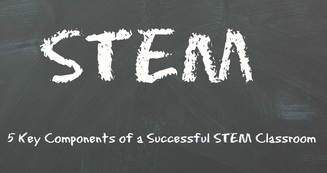 Could your classroom use a financial boost? Are you looking for funds to add a new tool to your classroom? Does your school or your classroom need extra financial backing to go from “good” to “great”? You’re definitely not alone! The best classroom tools are out of reach for many schools without the means to pay for them. We’ve scoured the internet for best grant and funding websites and came up with a list of grant programs designed exclusively for educators. The following are our favorite grant resources: 8 Grant and Funding Resources for your Classroom* 1. The Big List of Educational Grants and Resources – Edutopia created this roundup of educational grants, contests, awards, free toolkits, and classroom guides aimed at helping students, classrooms, schools, and communities. The list is updated weekly, so check back often! 2. Grants.gov – this website has a searchable list of grant opportunities. Users can filter the search criteria to find grants right for their school or project. Simply click on the “Search Grants” tab at the top of the page to get started. 3. GrantsAlert.com – this website is designed specifically to connect educators with available grant money. Users can search geographically, by types of grants, and the date added. The website also connects users with professional grant writers that can assist with the applications. 4. The NEA Foundation – the NEA Foundation’s goal is to strengthen teaching and learning opportunities. In addition to sharing best practices with educators, they provide links to funding opportunities on both a state and national level. 5. Grants for Teachers – this website arranges grant opportunities by subject matter, from Professional Development grants to STEM grants, Classroom Enrichment and Student Achievement. 6. Teachers Count – this website arranges grant opportunities by subject matter. If you are looking for subject-specific grant information, this is a great resource. Technology-Specific Grants 7. Classroom Technology Grants – this is a list 7 ways to secure technology funds for your classroom. Career and Technical Education Grants 8. CTE Funding – the Association for Career and Technical Education has a list of CTE-specific funds for schools looking to bolster technical education programs. This list is the tip of the iceberg – there are thousands of grant and funding opportunities, from local, statewide and national sources. The funds are there -- be creative when searching for funding opportunities. We’d like to hear from you: Do you have any sure-fire grant writing tips? Leave them in the comments, below! *These are grant and funding opportunities, and by no means a guarantee of funding award.
1 Comment
 “Consider the reality of today’s job market. We have a massive skills gap. Even with record unemployment, millions of skilled jobs are unfilled because no one is trained or willing to do them.” -Mike Rowe Mike Rowe definitely has a point. There are a lot of misconceptions about skilled labor today – that it’s a career consolation prize or for people not right for college. It’s time to debunk those myths, and help students understand that skills trades are valuable and necessary in today’s world. At Moss, we’re here to help you debunk some of the myths for your students (and clear up a few myths you may have). Myth #1 – Students are Not Enrolling in CTE Programs From 3D Printing to Mechatronics to Hydraulics and Pneumatics programs, career and technical educational positions are in high demand. Whether students are learning skills in a high school CTE program, transitioning to college coursework, or are workers looking for more advanced skills to further their careers, skilled trades are in high demand, especially in the heartland where manufacturing drives the workforce. Myth #2 – Skilled Labor jobs = Factory Work Skilled labor can mean factory work, yes, but the skills needed to excel in these positions are also required for work in agriculture, aerospace, civil engineering, mechanical drafting, medical technicians, nuclear technicians, robotics engineers and many more. With the right training and skill set, a technical degree can definitely take students off the factory floor. Myth #3 – Students can’t make a living with Skilled Lab positions Contrary to popular belief, skilled labor positions are some of the most high-paying entry-level positions today. People with the right skills are in high demand and can command an impressive starting salary upon graduation. Take a look at the Bureau of Labor Statistics Occupational Outlook Handbook for the following positions, or search a field of study here. Electro-mechanical Technicians Environmental Engineering Technicians Industrial Engineering Technicians Myth #4 – All Skilled Labor Jobs are the Same Skilled labor positions range from construction workers, plumbers, and electricians to robotics operators, mechatronics operators to engineers. Skilled labor is an umbrella term that blankets a very broad field. The variety of work is endless; and the skills are transferable. For example, a wind energy technician has mastered skills in hydraulics and pneumatics, and can turn around and use those skills in construction, agriculture, machine tools, wood processing, offshore, or aerospace fields (to name a few). A student can create their own path once they have mastered these 21st century skills. Myth #5 – Once a Student Learns a Skill, they are “Stuck” for the Rest of their Careers When a student learns a skill set, there is a lot of mobility to apply those skills to other fields as the need arises. In the case of the wind energy technician, above, a student has almost endless opportunities for high-paying positions in a variety of fields. Myth #6 – Skilled Labor Programs are Expensive for the College and the Student Though some programs require a greater initial investment, high schools and colleges can provide programs that are low-cost and highly effective. From Forklift Operation to pneumatics training, simulation programs provide an affordable alternative to other training programs. When looking for new classroom tools and curriculum, it’s helpful to look for certification programs that offer certifications so you can rest assured that your students are learning the right job-ready skills. Do you offer the right curriculum to help your students succeed? Take this 6 Question Quiz to find out: How does your program stack up? Let us know in the comments section!
 STEM classrooms are different – not only in coursework, but in educational outcomes. These classrooms rely less on memorization and more on critical thinking skills. When you visit a STEM classroom it just feels different – more alive, more energized, more like what you would expect. Five Key Components of a Successful STEM Classroom: Engaged Students – when students are engaged, they exhibit a higher level of critical thinking and content is not only memorized, but mastered. Timothy Huneycutt suggests in the National Math + Science Initiative Blog that creating a classroom where students are independently thinking in the classroom is the key to long term success. Project Based Learning – For many students, doing is the key to understanding AND retaining the information. Solid curriculum incorporates all learning styles (visual, auditory and kinesthetic) to address the learning styles of all students. Age Appropriate Curriculum – the building blocks of scientific inquiry are built in elementary classes, and build in middle school, though high school and post-secondary education. The right curriculum challenges students at every level, adding to previously mastered topics. Need an example? Pitsco Education has developed age appropriate curriculum for every age level. Career Focused – it’s never too early to start incorporating the real-world into the classroom. Real world applications will create connections for the student; they will never again need to ask “when will I ever use this in the REAL WORLD?” because every lesson will reinforce that (and make the lesson more tangible to the student). Flexible – high performance STEM classrooms all have classrooms that are designed for discovery and facilitate the lessons. Furniture becomes part of the teaching tool kit. Desks are mobile, table tops double as white boards for doodling and notes. Interior Concepts provides photos of the most popular room designs in this slide deck. What works well in your classroom? What tools and ideas are you excited to incorporate? STEM Education -- it evolves every day. New tools, new ideas, new best-practices -- the technology you will use in your classroom is being developed today. (Yes, innovation really does move that fast!) What works? What doesn't work? We know you have a lot of questions, and we want to help you find the best answers!
But, we don't want this to be a one-way street. We want to hear your thoughts -- what is working, what could use a little improvement? How can we help you stay ahead of the trends and provide the best outcomes for your students? Check back often for updates, and let us know your thoughts in the comments section. We're glad you're here! |
AuthorYou have questions about STEM education? You're not alone! We're here to share ideas and provide thought-provoking commentary. Let us know your thoughts! Sign Up for Email Updates For Email Marketing you can trust. Categories
All
Archives
February 2017
|
- Home
-
K-12
- College
- Industry
- Certifications
-
Partners
- Afinia-3D Printing
- Amatrol-Manufacturing Training Equipment
- Apolo Studios- Welding Simulation
- Bantam Tools - CNC
- CEF-Custom Educational Furniture
- DAC Worldwide-Manufacturing Training Equipment
- Greene Manufacturing Inc - Furniture
- Iconic CNC
- Interior Concepts-Furniture
- MSSC Certifications
- MINDS-i Education
- Pitsco Education-STEM
- SimLog-Heavy Equipment Simulation
- Stokes Robotics
- Techno CNC Systems
- Universal Laser Systems
- VictoryXR - Virtual Reality
- WB Mfg - Furniture
- Funding
- Contact
- About
- Home
-
K-12
- College
- Industry
- Certifications
-
Partners
- Afinia-3D Printing
- Amatrol-Manufacturing Training Equipment
- Apolo Studios- Welding Simulation
- Bantam Tools - CNC
- CEF-Custom Educational Furniture
- DAC Worldwide-Manufacturing Training Equipment
- Greene Manufacturing Inc - Furniture
- Iconic CNC
- Interior Concepts-Furniture
- MSSC Certifications
- MINDS-i Education
- Pitsco Education-STEM
- SimLog-Heavy Equipment Simulation
- Stokes Robotics
- Techno CNC Systems
- Universal Laser Systems
- VictoryXR - Virtual Reality
- WB Mfg - Furniture
- Funding
- Contact
- About

 RSS Feed
RSS Feed
